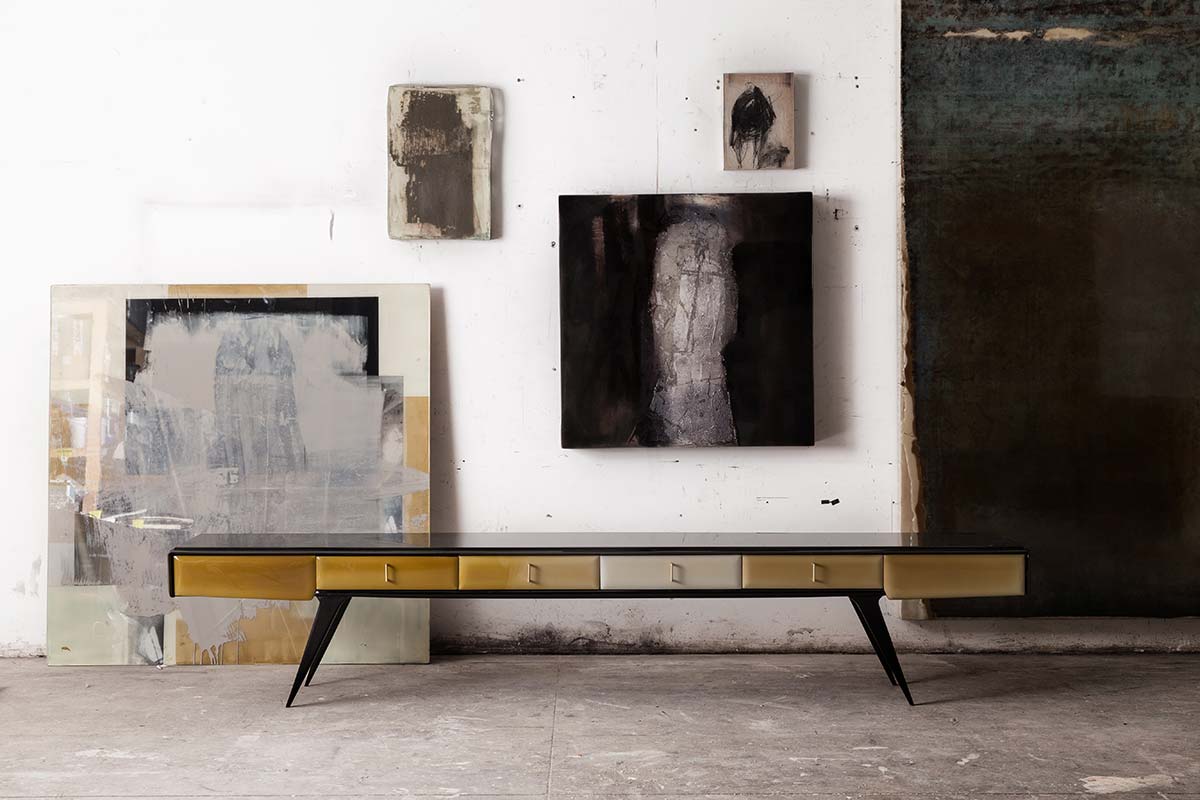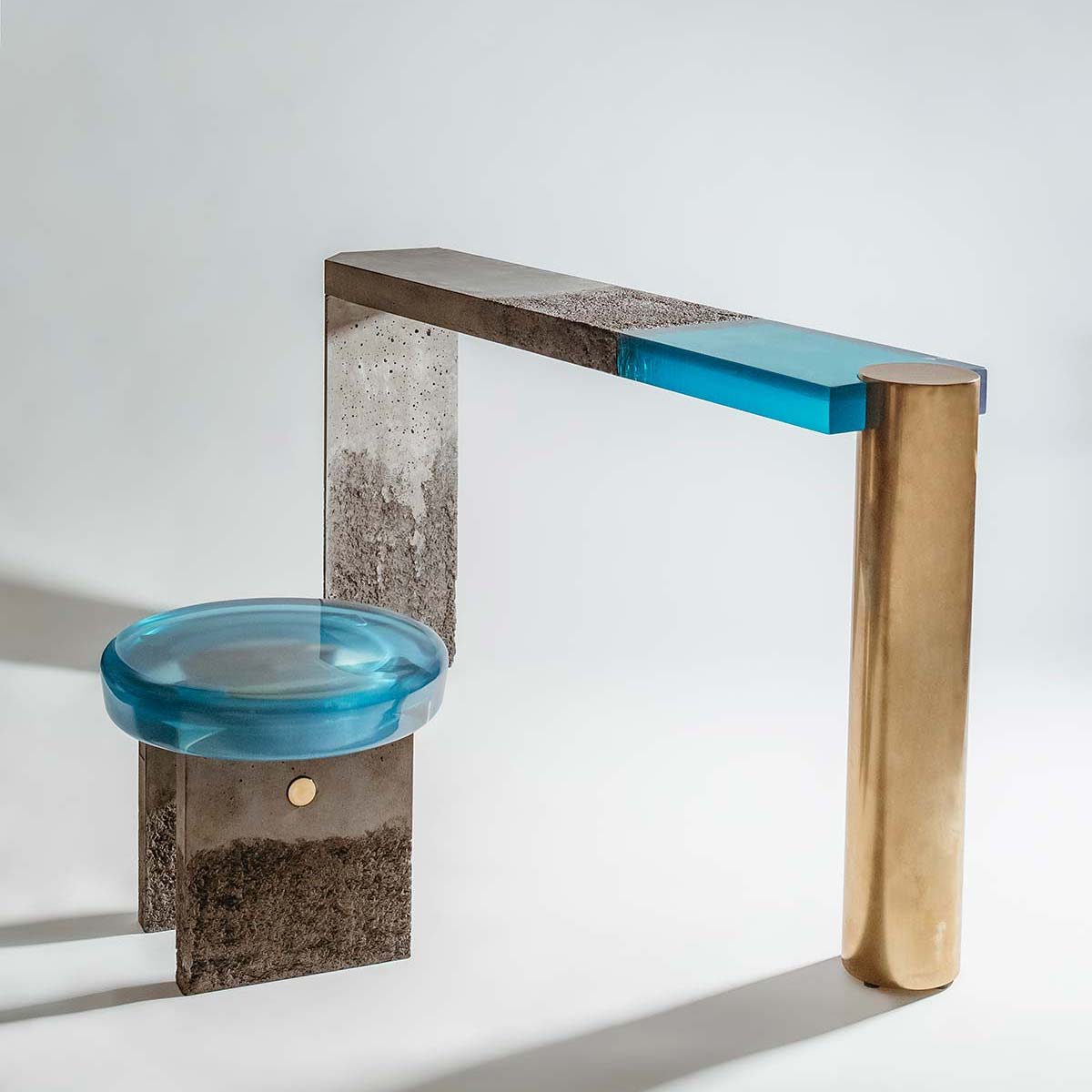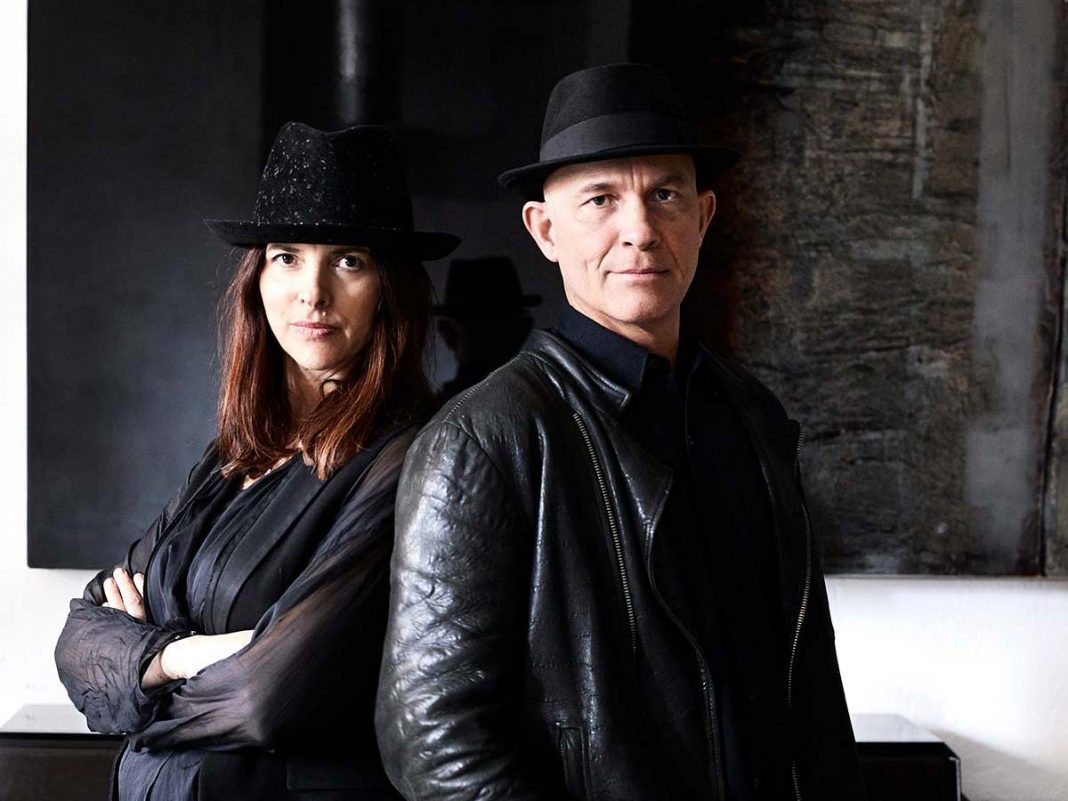Artists, designers, makers of editions: all this and more. Draga Obradovic and Aurel K. Basedow break down the boundaries of rigid categories, guided by free creativity, which for them means emotion and vision. Their cosmopolitan background is reflected in a multidisciplinary approach, ranging from product to interior design, to artistic experimentation. Their way of thinking ‘outside the box’ led – before its time – towards that coveted mixture known as art design. A career marked by important collaborations with Baxter, Anthropologie, Wall&decò, Visionnaire (debut this year). They’ve summed up their thinking in a personal collection: Transparency Matters.
What is the process involved in working as a duo?
Draga: We differ in terms of character. As a Germanic person, and an artist, he has a ‘dryer’ vision of things, while I’m more exuberant, unstoppable, also when I’m creating. We draw on the same ‘source’ but each with our own passions. We express ourselves in different ways: I use design, he uses art. But when we examine a piece that we have made, a work of art or a piece of furniture, we see there is an interchange of visions. In other cases, each of us has an intuition, which cannot be hampered or changed.

Draga&Aurel Atelier – Photo © Riccardo Gasperoni
Your path began with vintage. How did it evolve towards
a concept of art design?
Draga: In our story so far, every two years there is a cycle that closes and another that opens. Our creativity is thus very dynamic, we constantly make new things, new collaborations, and we inevitably need an internal structure. At first we worked together, and we were known for vintage or recycled furnishings, unique pieces I made with experimentations on color and handpainted fabrics, while Aurel worked above all with resin. Our first atelier was a real workshop. Then came the first collections with Baxter (but also Anthropologie), where something different emerged; when we were asked to make items produced in series, it was a new challenge. How could we make our uniqueness into something commercially viable? Hence the first considerations on design, seeking solutions that would conserve our ‘artistic’ signature, but inside a corporate context like that of Baxter.
Aurel: The answer was to finish things by hand. While at first we made each piece, one at a time, to adapt to larger production runs we decided to always keep one last finishing touch done by hand: therefore every piece, even if replicated, would have something different from the others.
Draga: As we grew, Aurel spent a lot of time on research and discovery of crafts (lathe work, carpentry, metalwork…) in our zone, and today this is part of our production system. But he was slowly ‘fading,’ so after a sabbatical year he decided to focus only on painting, and once again it was Baxter, specifically Paolo Bestetti, that saw the potential of his works. So we took two directions, where I concentrate on product design and he concentrates on art.
What is the meaning behind your works?
Aurel: They are always intimate expressions of what I am experiencing in the moment, when I paint; discourses, dialogues with myself, opportunities for meditation, in a certain sense: this is the maximum happiness, because it is no longer work at all. I don’t have an idea of meaning, a priori, which I then put on canvas: there are intuitions and visions, emotions that lead me in one direction or another. One characteristic is that my painting draws on many different styles and approaches: sometimes pure, meditative abstraction, sometimes something closer to action painting. Another constant is a glossy finish: having worked with resin for many years, I know this material and it is part of my background; furthermore, it links back to the sacral quality of painting (which has always interested me): just as antique paintings were covered with glass, for me resin has the same aim, to create a play of reflections that triggers self-reflection: what the viewers see is actually through their own eyes, not mine; the painting was initially created for me, but then it becomes theirs, to some extent. Not everyone notices that in my paintings there is a base made with a rug: it is a philosophical idea, in which the rug symbolized antiquity, memory, without which the present could not exist.

Golia by Draga&Aurel – Photo © Federica Lissoni

Transparency Matters by Draga&Aurel – Photo © Riccardo Gasperoni
Resin is your ‘trademark.’ Are there other constants?
Draga: We have never followed fashions, because we only follow our passions; it’s our way of expressing creativity.
Vintage, where we were forerunners, then became a boom. We are first of all artists by training, having studied painting; we didn’t know we could become designers, but we did: therefore we have our visions that guide us. As in the collection Transparency Matters, with its very experimental character that freely conveys our way of seeing objects and the results of our research: we see the potential in any object. Luckily we have our team that is able to transform our ideas into projects. Finally, we are also makers of editions: we work on the design and production, so the fact of always being in the territory, interacting with suppliers, learning from them, has enabled us to create a studio not just for design, but for the creation of a complete interior project.
Transparency Matters expresses your experimental
creativity. What are its defining elements?
Draga: I like to give names to our projects and products. “Transparency” because the material of the collection, composed of small tables, lighting (a new development for us) and complements is thick, completely transparent resin; a material that also becomes a statement in the title. It is a matter of being ourselves, of defining ourselves, of saying “we are what you see.” Then there is the element of color; in the creation of the colorings I feel like an alchemist: it is like music, colors are the notes that express the mood of the moment. Finally, there is the effort of craftsmanship, research on form, elegance, which we do not wish to abandon. We do not want to seek excess, to ‘shout’ the design, as is now in vogue in collectible design: for us, the products have to be intriguing, with a sophisticated touch, in pursuit of beauty, new or recovered thanks to our interpretation.
Art design, collectible design: the sectors contaminate each other. What are your thoughts?
Draga: We often have discussions about art and design, and their boundaries. Function does not demote a creation to being non-artistic. And a painting does not have to be only a museum piece – art should be lived! Actually, it is more a problem of the market; the galleries keep this distinction between pure art and art-design in place. In a moment when boundaries and limits are being challenged, in our own way we are moving forward with a project that reflects our identity, without categories: we don’t like limitations. What is important is to keep a strong narrative behind every project, which is what we try to do: maybe in the future we will be recognized as forerunners in this movement, who have broken down these barriers between sectors, with the possibility of finding contexts where our works can coexist with our furnishings.



















